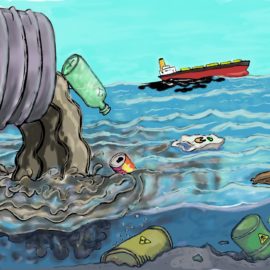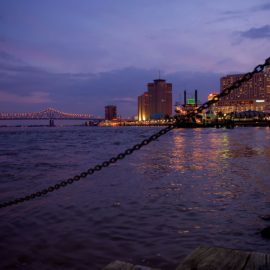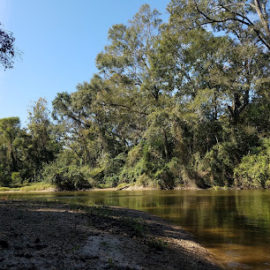
We wanted the air to be monitored and it was not a good report for benzene.
A new effort to measure the levels of benzene, a cancer-causing air pollutant, along the perimeters of U.S. refineries found that five of the 13 facilities with the highest levels are in Louisiana. What’s more, the refinery with the worst emissions was Delek USA’s Krotz Springs refinery, located 45 minutes west of Baton Rouge along the Atchafalaya River, according to the report by the Environmental Integrity Project, a national environmental nonprofit. There, fence line monitors measured an average net concentration of 31.1 micrograms per cubic meter of benzene. That’s more than triple the level allowed before the U.S. Environmental Protection Agency steps in. A 2015 EPA rule requires oil refineries to install air pollution monitors on their fence lines to measure how much benzene is escaping into surrounding areas. If the annual average exceeds 9 micrograms per cubic meter, refineries must search for the cause and take steps to fix it.
nola.com
Benzene is a component of oil and gas and leakage is not unusual.
Eric Schaeffer, the nonprofit’s executive director, said it’s not surprising to see it leak out of industrial plants. “You’re always going to have some, a little bit of benzene in the air around refineries and chemical plants,” he said. “But it’s also a very potent carcinogen.”
Lifetime exposure to high readings of benzene can cause respiratory problems or, if really high readings, to cause Leukemia. In the area near this plant there are reports of cancer rates being higher than norms. This was the reason monitoring was requested.
There are 16 refineries in Lou. isiana, 11 of which did not exceed the federal threshold, according to the report. Along with Delek, the four others that did exceed that level include Phillips 66 Lake Charles plus three facilities in the New Orleans metro area: Shell Norco Manufacturing, Chalmette Refining and Phillips 66 Alliance. Of those, the Shell Norco refinery was the only one over the threshold believed to significantly increase cancer risk, at 14.6 micrograms per cubic meter. “Clearly we are in a calamitous situation here in Louisiana, with five refineries on this list,” said Anne Rolfes, executive director of the Louisiana Bucket Brigade. “If you want to know why Louisiana leads so many of the bad lists for health and wealth, look no further than this.” For refineries like Delek and Chalmette Refining, which have exceeded the unacceptable threshold for two years, there’s more pressure to reduce their benzene emissions, said Schaeffer. Nationally, just seven refineries exceeded the 13 micrograms per meter level.
The oil industry downplays the readings as they may either be in error or not mean what the rules state or health entities state. It is obviously a game of trying to catch the industry in a mistake. This is a common play today in many things.
Nathan McBride, the regulatory affairs manager for the Louisiana Mid-Continent Oil and Gas Association, said that threshold tells refineries that there may be a leak onsite of benzene and other emissions. It doesn’t necessarily mean there is a danger to public health. Given the prevalence of benzene throughout the refining process, it can be an indicator of fumes escaping without the refinery’s knowledge. “They’re just trying to find leaks to drive down emissions, period,” he said. “Benzene was just the widest method they could catch to locate those emissions sources.”
Delek, since 2020, has made changes to the plant and added more clean up equipment
.
Since submitting a corrective action plan in June 2020, Delek has upgraded several storage tanks, removed others from use, relocated some products to areas with better emissions control and used gas imaging cameras to identify sources of benzene, both onsite and offsite like barges, among other steps. A spokesman said the efforts have made a big difference. “Delek is focused on serving as a good steward of the environment and supportive member of the communities in which we operate. We implemented a number of effective changes at the Krotz Springs Refinery in September of 2020,” said a Delek spokesman. “Since taking those steps, the refinery’s two-week average fenceline monitoring results for benzene have been below the 9 micrograms per cubic meter threshold. We anticipate the refinery’s rolling 12-month average will fall below 9 micrograms per cubic meter by this summer.”
The environmental group also said that the EPA rule allows companies to subtract emissions from benzene storage tanks and nearby facilities. This obviously lowers the counts. Low income and minorities are overly effected by these plants as the income disparity works against them the most. The Administration is hoping to change this but it will take work.



